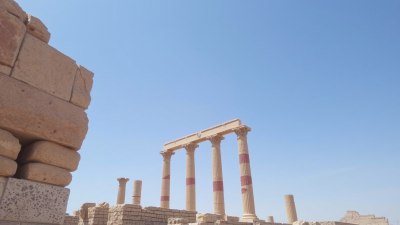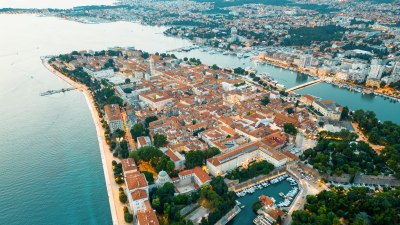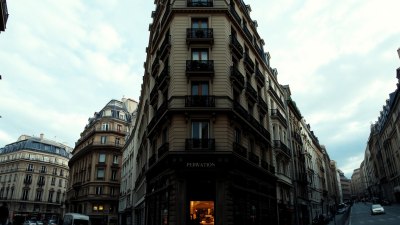Amman's Roman Ruins: Exploring Jordan's Ancient History
Discover the rich history of Amman's Roman ruins and their significance in Jordan's cultural heritage.

Amman, the capital of Jordan, is a city steeped in history, where ancient civilizations have left their mark. The Roman ruins in Amman, a testament to the city's rich heritage, provide a window into the past that continues to attract historians, archaeologists, and tourists alike. With various well-preserved structures ranging from theaters to temples, the Roman influence in Amman offers a fascinating exploration of the cultural evolution of this region.
The History of Amman's Roman Ruins
The Roman era in Amman began when the city was known as Philadelphia during the Hellenistic period. It was incorporated into the Roman Empire around 63 BC when Pompey the Great conquered the region. Under Roman rule, Philadelphia flourished; it became an essential part of the Decapolis, a league of ten cities that were centers of Greek and Roman culture in the eastern provinces.
One of the most significant contributions of the Romans to Philadelphia was the construction of monumental architecture, which remains a vital part of the city's identity today. The Roman period lasted until the advent of the Byzantine era, leaving behind an impressive legacy of ruins that narrate the story of Amman.
Key Ruins to Explore
Several key sites in Amman's Roman ruins provide insight into the architectural and cultural achievements of the era. Among them, the Roman Theatre stands out as a must-visit. Built during the reign of Emperor Antoninus Pius in the 2nd century AD, the theatre is a monumental structure that could accommodate around 6,000 spectators. The theatre was primarily used for performances, theatrical productions, and public gatherings, reflecting the social and cultural life of the time.
Adjacent to the Roman Theatre is the Odeon, a smaller theater used for musical performances. Constructed later, the Odeon can hold about 500 people and showcases the importance of music and performing arts in Roman Amman. The seating arrangement and the acoustics are designed magnificently, offering a glimpse into the architectural ingenuity of the Romans.
Another significant site is the Temple of Hercules, located on the Citadel Hill. This temple, dedicated to the Roman god Hercules, reflects the religious practices of the era. Although only a few columns remain standing, the site offers a breathtaking view of the surrounding landscape and hints at the grandeur of Roman religious architecture. The Citadel itself houses remnants from various periods, with the Roman ruins harmoniously blending with Byzantine and Islamic structures.
The Cultural Significance of Roman Ruins
The Roman ruins in Amman are not just remnants of the past; they serve as a vital link in understanding the cultural tapestry of Jordan. The blend of Roman, Byzantine, and Islamic influences creates a diverse heritage that enriches the country’s identity. The ruins are significant for several reasons:
- Historical Insight: The ruins offer a snapshot of life during the Roman Empire. They provide historians with valuable information about the social structures, architectural styles, and daily life of the time.
- Tourism and Economy: The Roman ruins attract significant tourist traffic, contributing to the local economy. They are vital for showcasing Amman's history and promoting cultural tourism in Jordan.
- Education and Research: The sites serve as an open-air museum, a resource for educational institutions and a focal point for archaeological research. Scholars and students can study architecture, urban planning, and the evolution of civilizations through these ruins.
Preservation Efforts
Preserving the Roman ruins in Amman is crucial for maintaining the city’s cultural heritage. In recent years, the Jordanian government and various international organizations have collaborated on preservation projects to safeguard these historic sites. Restoration works aim to stabilize the remaining structures and improve accessibility for visitors while ensuring that the authenticity of the ruins is maintained.
Awareness campaigns also play a significant role in the preservation of the ruins. Educating the public about the importance of these sites encourages responsible tourism and supports local initiatives focused on conservation efforts. Visitors are encouraged to respect the ruins and engage with the local communities to foster a sense of shared history.
Exploring the Surroundings
While visiting the Roman ruins, it is essential to explore the surrounding areas that offer additional cultural experiences. The nearby Jordan Archaeological Museum houses artifacts discovered at various archaeological sites in Jordan, including the citadel area of Amman. The museum displays valuable items from prehistoric to Islamic periods, enhancing the understanding of Jordan's rich heritage.
Another nearby attraction is the Al-Maghtas, an archaeological site on the banks of the Jordan River, believed to be the baptism site of Jesus Christ. It provides visitors a unique opportunity to connect with the area's religious significance, further enriching their exploration of Jordan's history.
Visiting Amman's Roman Ruins
When planning a visit to Amman's Roman ruins, several factors can enhance the experience. First, timing is essential; the best time to visit is during the spring or fall when the weather is mild. Early morning visits provide a quieter atmosphere for exploration and photography.
Ensure to wear comfortable footwear, as the terrain can be uneven, especially around the Citadel and other archaeological sites. Guided tours are often available, offering deeper insight into the historical contexts and architectural innovations of the ruins.
Moreover, it is wise to allocate enough time for the visit. With so much to see and learn, a rushed tour might not do justice to the historical significance of these remarkable ruins. Engage with local guides who can share fascinating anecdotes and details that might not be immediately apparent.
Why the Roman Ruins Matter Today
The Roman ruins of Amman are a reminder of the region's extensive history and the interconnectedness of civilizations. As modern Jordan continues to develop, these ancient structures remind the people of their roots and the impressive legacy of those who came before them. They stand as symbols of resilience, demonstrating how cultures can endure and evolve over centuries.
Moreover, in a world increasingly driven by rapid change, the preservation of sites like the Roman ruins provides a counter-narrative, emphasizing the importance of history in shaping identity and culture. This perspective encourages a sense of responsibility towards heritage among locals and encourages visitors to appreciate the depth of history that these ruins represent.
In conclusion, Amman's Roman ruins are not just relics of the past but a living part of the city's present and future. They serve as an educational resource, a tourist attraction, and a symbol of Jordan's rich cultural landscape. To explore these ruins is to connect with a significant chapter in the story of human civilization, making a visit to Amman an enriching experience that transcends time and space.











